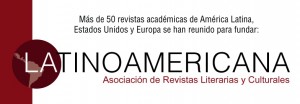For a literary historiography of gossip
Abstract
The aim of this article is to problematize the relations between gossip, literary criticism and canon. First of all, I try to think about the relations between literature and gossip, taking as a starting point the essay «El relato indefendible» (1973) by Edgardo Cozarinsky; from this essay, I aim to think about gossip in literature, but also literature as gossip, that is to say, as narrative material and, at the same time, a narrative strategy. Secondly, I reflect on the possible relations between gossip and literary criticism, I think about how gossip can be incorporated by criticism and, in this way, destabilize any totalizing and homogenizing intention of knowledge, whether about a particular piece of writing or a specific set of texts. The fundamental text for this second stage is Borges a contraluz (1989) by Estela Canto, a book that contemplates the double operation of gossip that I aim to study here, that is to say, as a narrative and critical procedure. Finally, the last step of this work consists of considering the implications of such reflections for the idea of a literary canon. In this context, criticism, instead of legislating, must show the messianic condition of the archive as a destabilizing power of readings and of the constituted archive itself.
References
Borges, Jorge Luis (2007a). «El escritor argentino y la tradición». Tomo 1. Obras Completas [1923-1985]. Buenos Aires: Emecé, pp. 316-324..
---------- (2007b). «La postulación de la realidad». Tomo 1. Obras Completas [1923- 1985]. Buenos Aires: Emecé, pp. 253-258.
---------- (2007c). «La supersticiosa ética del lector». Tomo 1. Obras Completas [1923-1985]. Buenos Aires: Emecé, pp. 236-239.
---------- (2007d). «Pierre Menard, autor del Quijote». Tomo 1. Obras Completas [1923-1985]. Buenos Aires: Emecé, pp. 530-538.
---------- (2007e). «Prólogo a la edición de 1954». Tomo 1. Obras Completas [1923- 1985]. Buenos Aires: Emecé, pp. 343-344.
Canto, Estela (1999). Borges a contraluz. Buenos Aires: Espasa. Cozarinsky, Edgardo (2005a). Museo del chisme. Buenos Aires: Emecé.
---------- (2005b). El que tiene sed [en línea]. Página 12, Buenos Aires. Entrevista concedida a María Moreno. 15 mayo 2005. Disponibilidad:
---------- (1968). «Un espacio verbal llamado Cuba». Revista Sur 312, pp. 70-71.
---------- (1977). «El relato indefendible». Revista Espiral 3, pp. 09-41.
Deleuze, Gilles (1987). La imagen-tiempo. Barcelona: Paidós.
Derrida, Jacques (1995). Espectros de Marx. Madrid: Editorial Trotta.
---------- (1997). Mal de archivo. Valladolid: Trotta.
Levi, Primo (2016). Opere complete. Bologna: Einaudi.
Piglia, Ricardo (2013). El último lector. Buenos Aires: Anagrama.
La aceptación de colaboraciones por parte de la revista implica la cesión no exclusiva de los derechos patrimoniales de los autores a favor del editor, quien permite la reutilización, luego de su edición en papel (postprint), bajo licencia Creative Commons Atribución-NoComercial-CompartirIgual 3.0
La cesión de derechos no exclusivos implica también la autorización por parte de los autores para que el trabajo sea alojado en el repositorio institucional de la UNT y difundido a través de las bases de datos que el editor considere apropiadas para su indización, con miras a incrementar la visibilidad de la revista y sus autores.























